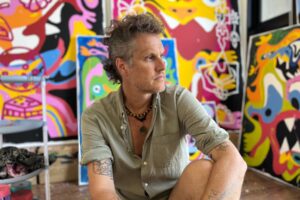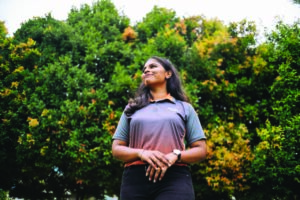Ever been slightly annoyed by something others barely noticed – maybe the flicker of a fluorescent light or the low hum of a refrigerator? For a brief moment, that small sensory detail might be all you can focus on. Now, what if that sensitivity intensified at a much higher level? Well, for many individuals on the autism spectrum, this isn’t a ‘what if’ – it’s a part of how they experience the world.
So, how does this different sensory experience show up for those on the spectrum? Some autistic individuals might have hypersensitivity. For them, everyday things like bright lights, loud sounds or strong smells can feel intense and uncomfortable – almost like the world’s volume is turned way up. On the other hand, some experience hyposensitivity, where they might need more sensory input to register sensations. They actively seek out strong sensory experiences like spinning or deep pressure hugs to help themselves feel calm, organised, and grounded in an environment that might otherwise feel chaotic or disconnected.
Chances are, we know someone autistic – perhaps a friend, family member or colleague – or we interact with autistic people in our community. Taking the time to learn about things like sensory differences helps us appreciate their perspectives and build genuine connections. In honour of World Autism Acceptance Day on 2nd April, let’s go beyond awareness and celebrate diversity with acceptance, support and appreciation for autistic individuals.
Who better to ask for perspectives than someone working directly on the ground? We speak to Vanisha Arumugam, a dedicated special needs educator at Taarana School – a centre focused on supporting students with special educational needs – where she works closely with autistic children.

What led you to pursue a path in special needs education?
I’ve always believed that every child is a gem, regardless of their differences. During my diploma studies in Early Childhood Education, I started asking myself important questions when I realised our community includes children with special needs alongside neurotypical children. This realisation naturally sparked many questions in my mind, like ‘What makes them different?’ and ‘What are they truly capable of?’.
Those specific questions then led me to explore the world of special needs education. In the end, what drives me is that combination of curiosity, love, and dedication to teaching, always remembering that every child with special needs has their own abilities, needs, and dreams — just like anyone else.
When it comes to autism, what are some common misconceptions you often encounter and what’s the reality you see?
One of the most common misconceptions I hear is that all individuals with autism have the same characteristics. However, the reality is that autism is a spectrum, meaning it affects individuals in different ways and to varying degrees; some may face challenges with communication and daily living, while others may excel in specific areas like maths or music.
Another misconception is that individuals with autism don’t have emotions or empathy. The truth is, individuals with autism feel emotions deeply but may struggle with expressing them or understanding social cues differently, showing empathy in their own valid ways and forming meaningful connections with support.
Equally misleading is the idea that individuals with autism can never live independently. While some require lifelong support, many individuals with autism grow up to lead fulfilling, independent lives, building careers and relationships just like anyone else, especially with the right support and interventions in place.
Following up on autism being a spectrum – are there distinct categories or subtypes recognised within that framework?
While the term ‘spectrum’ emphasises variation, the current official diagnostic framework, the DSM-5 (Diagnostic and Statistical Manual of Mental Disorders, 5th Edition), moved away from recognising distinct subtypes like Asperger’s Syndrome or Pervasive Developmental Disorder Not Otherwise Specified (PDD-NOS) that existed previously.
Instead of separate subtypes, the DSM-5 uses a single diagnosis: Autism Spectrum Disorder (ASD). It uses Levels 1, 2 and 3 to describe the level of support needed (support, substantial, very substantial). These levels clarify support needs across the spectrum, not different autism types, replacing terms like ‘high/low functioning’.

Given that diversity within the autism spectrum you’ve described, are there certain ways autism might present that could be easily overlooked or perhaps attributed to personality traits?
It’s quite common for autism presentations to be misinterpreted or maybe put down to personality traits. For example, someone might seem shy or even rude, but they could actually be struggling to process social cues or feeling anxious. Sensory sensitivities are another area; strong reactions to sounds or textures might get labelled as irritability, when really, the person is just overwhelmed. It’s similar to unexpected changes, where what looks like stubbornness might simply be anxiety or needing more time to adjust. So, it really helps for everyone to be more attuned to these subtleties, especially since they aren’t always the obvious signs people might expect.
With those subtle and varied presentations in mind, does this contribute to later diagnoses or individuals potentially staying undiagnosed?
Yes, definitely. It’s very possible for individuals to be on the autism spectrum without a formal diagnosis or even full awareness, sometimes well into their teens or adulthood. Many individuals develop very effective ways to cope or ‘mask’ their challenges in social situations. It’s often when life demands increase, like processing the much more complex social world of adolescence or handling higher education or work pressures, that these underlying difficulties become more apparent or overwhelming. This build-up of difficulty, perhaps seen as increased anxiety or struggles with abstract thinking, is often what leads a person to finally look for help and get diagnosed later on.
From your perspective as an educator, have you seen shifts in overall societal understanding or acceptance of autism over the years?
There’s been a notable shift away from how things used to be, where the focus was often on ‘curing’ autism or trying to make people conform to neurotypical standards. Now, the conversation has moved towards acceptance – respecting the different ways people on the spectrum experience the world. So the emphasis isn’t so much on ‘fixing’ anymore, but more on providing support that helps individuals grow using their own strengths while figuring out their challenges.
Concurrently, we’re seeing how much more visible autistic individuals are becoming, sharing their own experiences. You see it more in media, books, and advocacy platforms. This really helps break down old stereotypes, giving people a much more accurate picture of life on the spectrum.
In practice, how do we balance providing help with honouring their individuality and avoiding pressures to simply conform?
The key to balancing support with respect is meeting each autistic individual where they are, providing help without imposing rigid neurotypical expectations. Instead of solely focusing on struggles, we should put a spotlight on their strengths and passions – like intense focus or an out-of-the-box way of thinking. When we support these strengths, we build self-confidence and help individuals grow in ways aligned with their interests, rather than trying to make them ‘fit in’.

As we wrap up, what is the single most important message about the autism spectrum that you hope the general public holds onto?
My greatest hope is that we learn to support and celebrate these differences instead of seeing them as obstacles. Everyone on the spectrum deserves the chance to be understood and supported so they can grow as they truly are, without being pressured to be someone else. Let’s look past any label and just see the wonderful person standing there in front of us – exactly as they are.









